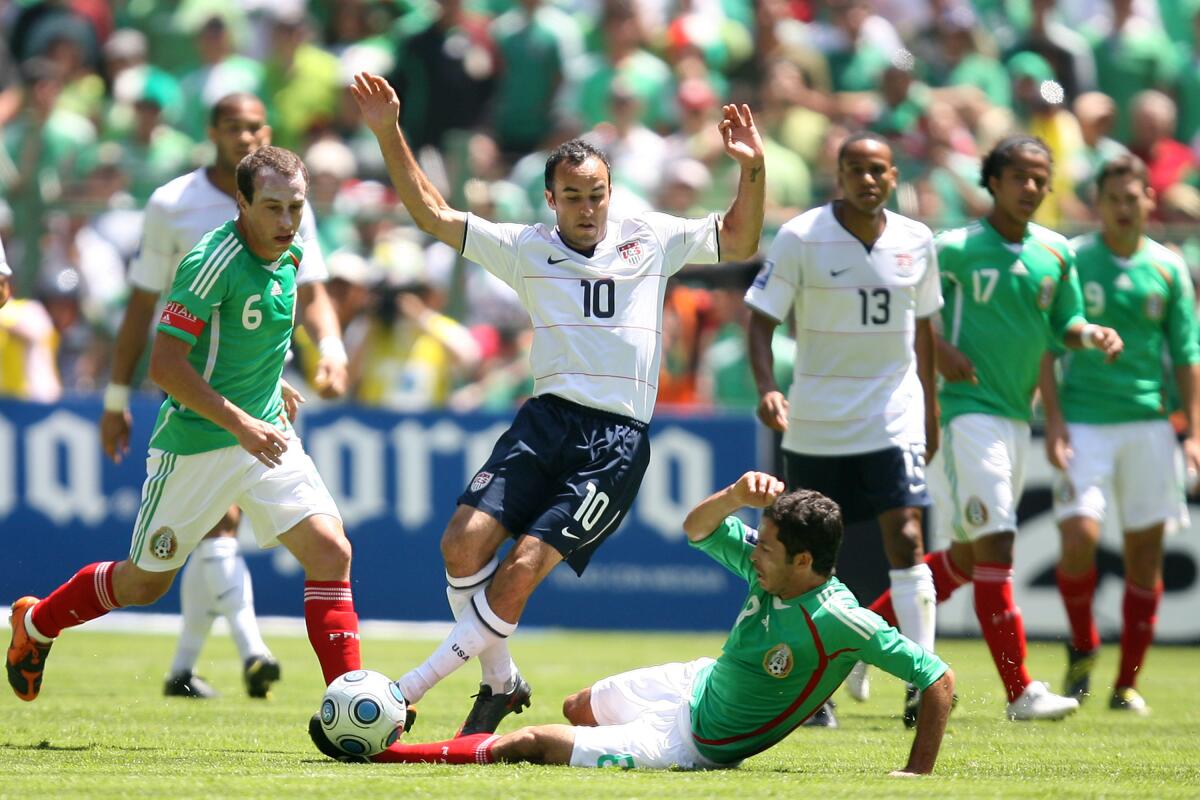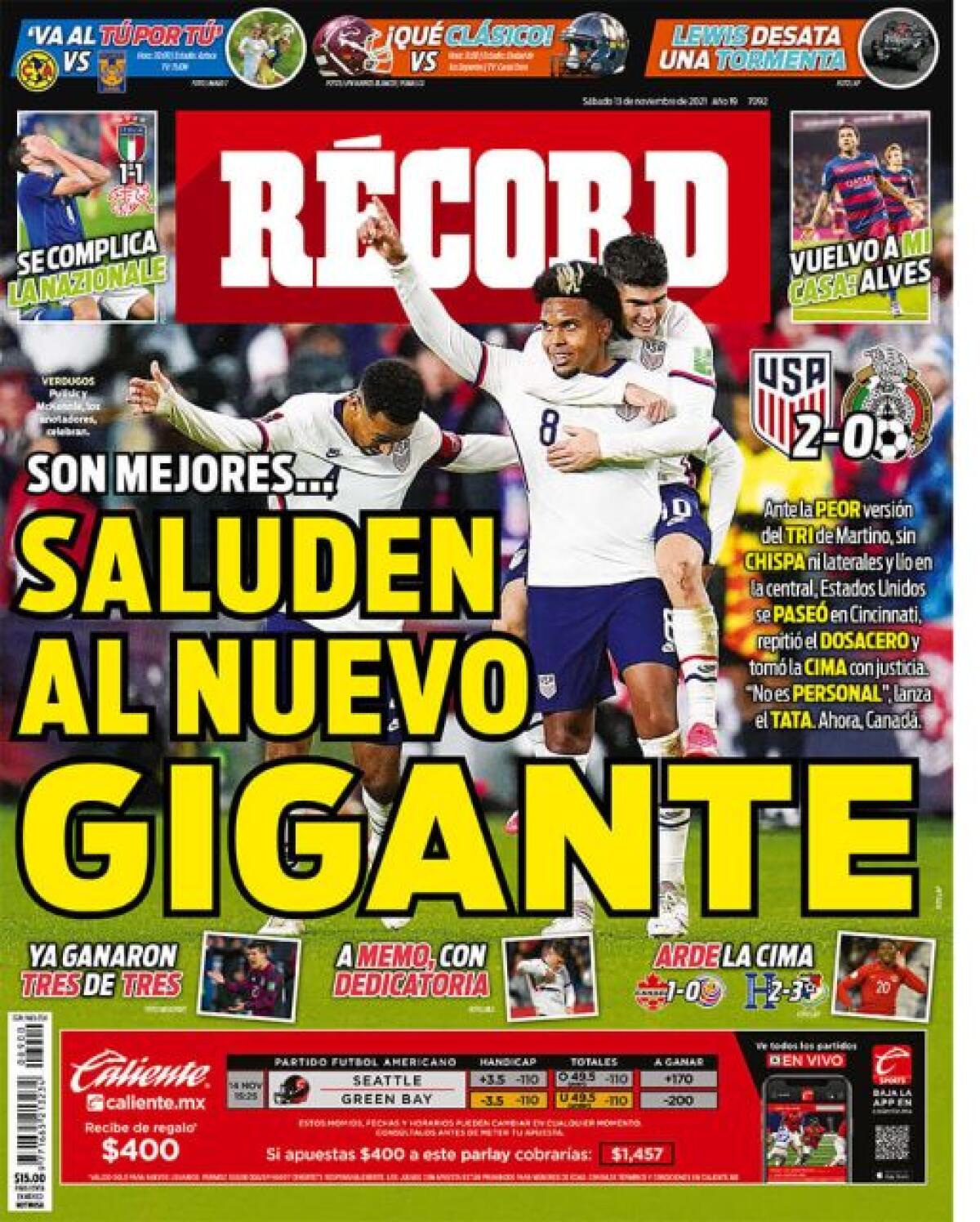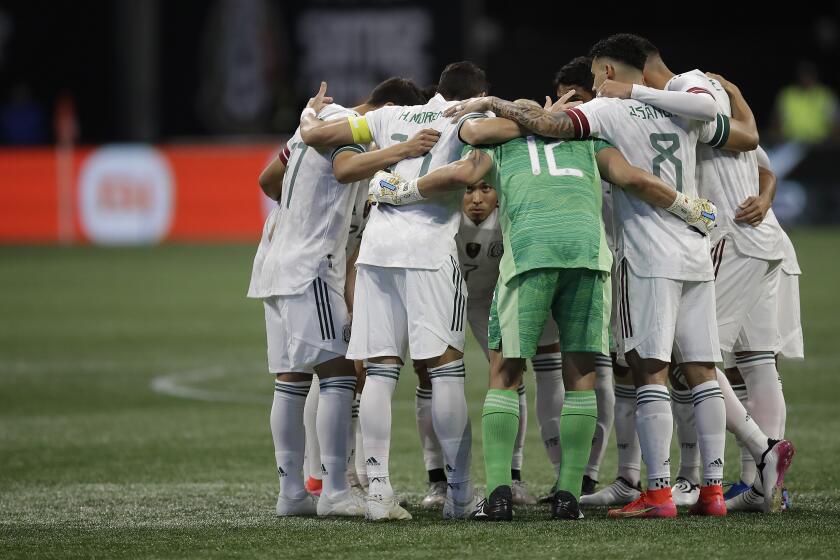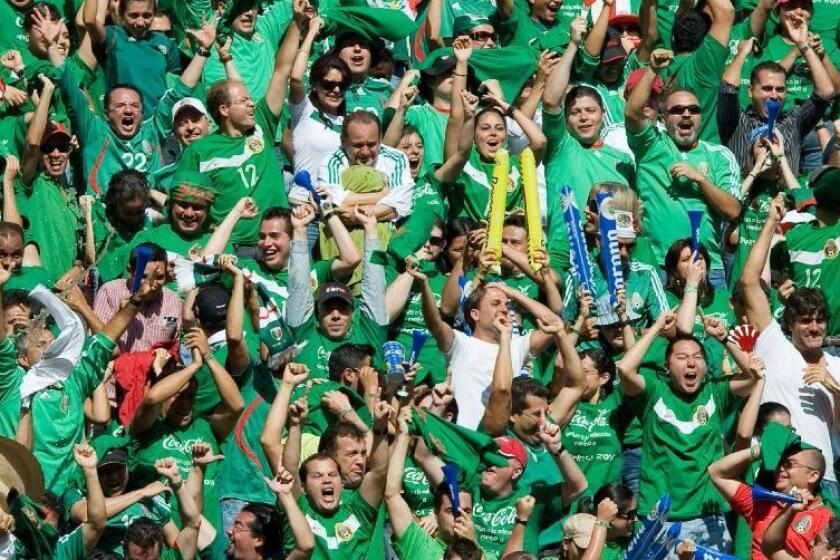U.S., Mexico soccer to play World Cup qualifier at Azteca, possibly for last time

- Share via
MEXICO CITY — There is no more difficult place for the U.S. national team to play than Estadio Azteca, Mexico’s iconic fortress home and the largest soccer stadium in Latin America.
If the heat, the altitude and the passionate Mexican fans don’t get you, the smog will.
“The last time we played, we had players very ill after the game,” said Bruce Arena, who coached the U.S. in three World Cup qualifiers at Azteca without winning a game. “I remember walking out in the tunnel and Kellyn Acosta was doubled over puking.
“It’s, uh, challenging.”
It’s also why the U.S.-Mexico rivalry is among the most intense in international sports, one that turns especially bitter when the stakes are high as they will be Thursday when the teams play in Azteca with a World Cup berth up for grabs.
The duel could soon lose some of its luster if that game proves to be the last one the teams play in Mexico City during World Cup qualifying.
Both countries, along with Canada, are expected to get automatic berths in the 2026 tournament since they’re hosting it, precluding a qualifying tournament. And by 2030, with the World Cup field at 48 teams and the number of guaranteed CONCACAF entrants doubling to six, the current qualifying format will have to change.
The U.S. men’s team returns to World Cup qualifying Thursday with a chance to punch its ticket to this fall’s tournament in Qatar.
What form that will take, nobody knows.
“At this point,” a U.S. Soccer spokesman said, “the World Cup qualifying process after 2026 has not been determined.”
But it will be different, with one likely scenario requiring separate qualifying groups similar to the format currently in place in Europe. And as long as Mexico and the U.S. remain the region’s top two teams in the FIFA world rankings, they would head different groups for the final round, meaning they would not play one another.
“It will certainly impact the rivalry,” said Landon Donovan, who played in 40 World Cup qualifiers, including two in Mexico where he was once pelted by Coca-Cola cups that contained … well, let’s just say it wasn’t a soft drink. “Mostly it hurts the fans on both sides’ ability to talk about who’s the best team in CONCACAF. When you play each other, there’s a barometer. When you don’t, [it’s] more subjective.
“It’s too bad because those games are, on both sides, some of the most memorable games, moments, etc. It’s disappointing.”

A change in the qualifying format wouldn’t stop the U.S. and Mexico from playing in other circumstances. The rivalry would continue in the biennial CONCACAF Gold Cup, the Nations League and with regular friendlies. But the stakes in those games are much lower than a World Cup qualifier. And most, if not all, of them would be played in the U.S., where Mexico has a lucrative promotional deal with Soccer United Marketing.
That’s why the U.S. has played just one game in Mexico that wasn’t a qualifier in the last 22 years.
“It’s a special because it’s unique,” Gerardo Torrado, sporting director for the Mexican soccer federation and a veteran of three World Cups, said of the quadrennial Mexico City qualifier.
“Qualifying for a World Cup always, it’s something special. But having the chance to qualify against your rival makes it more special.”
If Thursday’s game does prove to be the final qualifier in Azteca, at least the series is ending with a bang. Both teams come into the match with 21 points and trailing Canada in the eight-team table with three games remaining. Only three CONCACAF teams are promised spots in this fall’s World Cup in Qatar, and with Panama and Costa Rica still in the hunt, this game is one neither Mexico nor the U.S. can afford to lose.
The pressure may be greatest on Mexico. El Tri will be playing before a limited crowd of about 47,000, a little more than half the stadium’s listed capacity, robbing it of some of its homefield advantage. Capacity was limited because Mexico was implementing a FAN ID system in the wake of FIFA sanctions leveled over fans’ repeated use of an anti-gay slur.
Mexico can’t have fans attend its next two World Cup qualifiers.
Mexico also lost three times to the U.S. in 2021, something that’s never happened in the same calendar year before. With the Americans missing four starters to injury, another Mexican loss — this time in Azteca, more than a 1.3 miles above sea level and a place where the U.S. has won just once in its history — could cost coach Tata Martino his job, said Telemundo soccer analyst Miguel Gurwitz, who has covered the national team for two decades.
“Mexico, they can’t lose,” Gurwitz said. “It’s not right to lose every single game they play with the U.S. These 90 minutes are going to be very important for Martino.”
It wasn’t always like this. U.S. versus Mexico was once as one-sided as hammer versus nail. The Americans won the first meeting in 1934, then won just four of 40 matches over the next 64 years.
The U.S. has had the edge since 2000 though, going 17-9-6, including a victory in the round of 16 at the 2002 World Cup. And that has raised the importance of the cross-border competition by making it about national pride as much as it’s about soccer.
“The U.S.-Mexico soccer rivalry is, in my opinion, the most unique rivalry in international sports,” said Jon Weinbach, president of Skydance Sports, who is producing a documentary series on the U.S.-Mexico rivalry. “There’s nothing quite like it, where you have these issues of identity and belonging and race and culture and politics between two geographic neighbors that is so present on the field.
“I can’t think of any place else in the world where you have authentic border rivals.”

Keeping that alive is something CONCACAF and FIFA will likely strive to do when they work out World Cup qualifying procedures beyond 2026. They could decide on a single-table tournament, for example, similar to what the South American confederation uses. That would assure the U.S. and Mexico square off twice in qualifying every four years.
But the CONMEBOL competition, in which the 10 South American member countries battle for four World Cup spots, requires 90 matches played over two years. CONCACAF has 41 members who would be playing for six spots, so it would need an additional play-in tournament and probably a bigger field for the final round. That could make a CONMEBOL-like format unwieldly.
Will the rivalry suffer if World Cup qualifying is no longer a part of it? Weinbach doesn’t think so.
“World Cup stakes always mean something. But it’s not the only thing,” he said. “The rivalry in some ways has matured beyond just those World Cup qualifiers. Anytime the U.S. and Mexico play in this sport, it means something. It could be a youth exhibition game. If it’s U.S. and Mexico playing, it’s got that edge and it’s got that cultural context.”
Soccer-crazed Mexicans tune in for every big game, crowding bars, restaurants and any other place with a television.
Michael Orozco, a former national team defender who scored the goal in the only game the U.S. won in Azteca, disagrees.
“They shouldn’t let go of a massive game that catches eyes from all over the world,” he said. “Everybody looks at this [game]. You’ve got the whole political side, you’ve got the whole soccer side. Everyone wants to watch this game. Everybody wants to be involved in this game.
“It does not just happen within those 90 minutes. It’s kind of building into it, the talk, emotions. That’s what soccer should be about, the Super Bowl. The U.S. against Mexico at the Azteca is practically that.”











